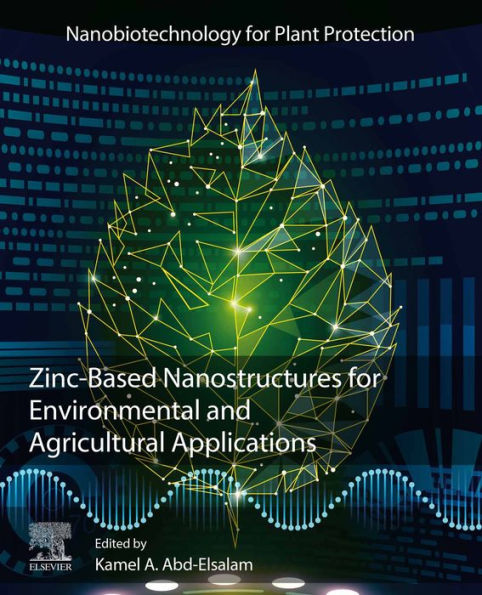Zinc-Based Nanostructures for Environmental and Agricultural Applications shows how zinc nanostructures are being used in agriculture, food and the environment. The book has been divided into two parts: Part I deals with the synthesis and characterization of zinc-based nanostructures such as biogenic, plant, microbial, and actinobacteria mediated synthesis of zinc nanoparticles, Part II is focused on agri-food applications such as antibacterial, antifungal, antimicrobial, plant disease management, controlling post-harvest diseases, pesticide sensing and degradations, plant promotions, ZnO nanostructure for food packaging application, safe animal food and feed supplement, elimination of mycotoxins, and veterinary applications. Part III reviews technological developments in environmental applications such as risks and benefits for aquatic organisms and the marine environment, antiseptic activity and toxicity mechanisms, wastewater treatment, and zinc oxide-based nanomaterials for photocatalytic degradation of environmental and agricultural pollutants.
The book discusses various aspects, including the application of zinc-based nanostructures to enhance plant health and growth, the effect on soil microbial activity, antimicrobial mechanism, phytotoxicity and accumulation in plants, the possible impact of zinc-based nanostructures in the agricultural sector as nanofertilizer, enhancing crop productivity, and other possible antimicrobial mechanisms of ZnO nanomaterials.
- Explores the impact of a large variety of zinc-based nanostructures on agri-food and environment sectors
- Outlines how the properties of zinc-based nanostructures mean they are particularly efficient in environmental and agricultural application areas
- Assesses the major challenges of synthesizing and processing zinc-based nanostructured materials
Zinc-Based Nanostructures for Environmental and Agricultural Applications shows how zinc nanostructures are being used in agriculture, food and the environment. The book has been divided into two parts: Part I deals with the synthesis and characterization of zinc-based nanostructures such as biogenic, plant, microbial, and actinobacteria mediated synthesis of zinc nanoparticles, Part II is focused on agri-food applications such as antibacterial, antifungal, antimicrobial, plant disease management, controlling post-harvest diseases, pesticide sensing and degradations, plant promotions, ZnO nanostructure for food packaging application, safe animal food and feed supplement, elimination of mycotoxins, and veterinary applications. Part III reviews technological developments in environmental applications such as risks and benefits for aquatic organisms and the marine environment, antiseptic activity and toxicity mechanisms, wastewater treatment, and zinc oxide-based nanomaterials for photocatalytic degradation of environmental and agricultural pollutants.
The book discusses various aspects, including the application of zinc-based nanostructures to enhance plant health and growth, the effect on soil microbial activity, antimicrobial mechanism, phytotoxicity and accumulation in plants, the possible impact of zinc-based nanostructures in the agricultural sector as nanofertilizer, enhancing crop productivity, and other possible antimicrobial mechanisms of ZnO nanomaterials.
- Explores the impact of a large variety of zinc-based nanostructures on agri-food and environment sectors
- Outlines how the properties of zinc-based nanostructures mean they are particularly efficient in environmental and agricultural application areas
- Assesses the major challenges of synthesizing and processing zinc-based nanostructured materials

Zinc-Based Nanostructures for Environmental and Agricultural Applications
676
Zinc-Based Nanostructures for Environmental and Agricultural Applications
676
Product Details
| ISBN-13: | 9780128236567 |
|---|---|
| Publisher: | Elsevier Science |
| Publication date: | 05/22/2021 |
| Series: | Nanobiotechnology for Plant Protection |
| Sold by: | Barnes & Noble |
| Format: | eBook |
| Pages: | 676 |
| File size: | 72 MB |
| Note: | This product may take a few minutes to download. |
